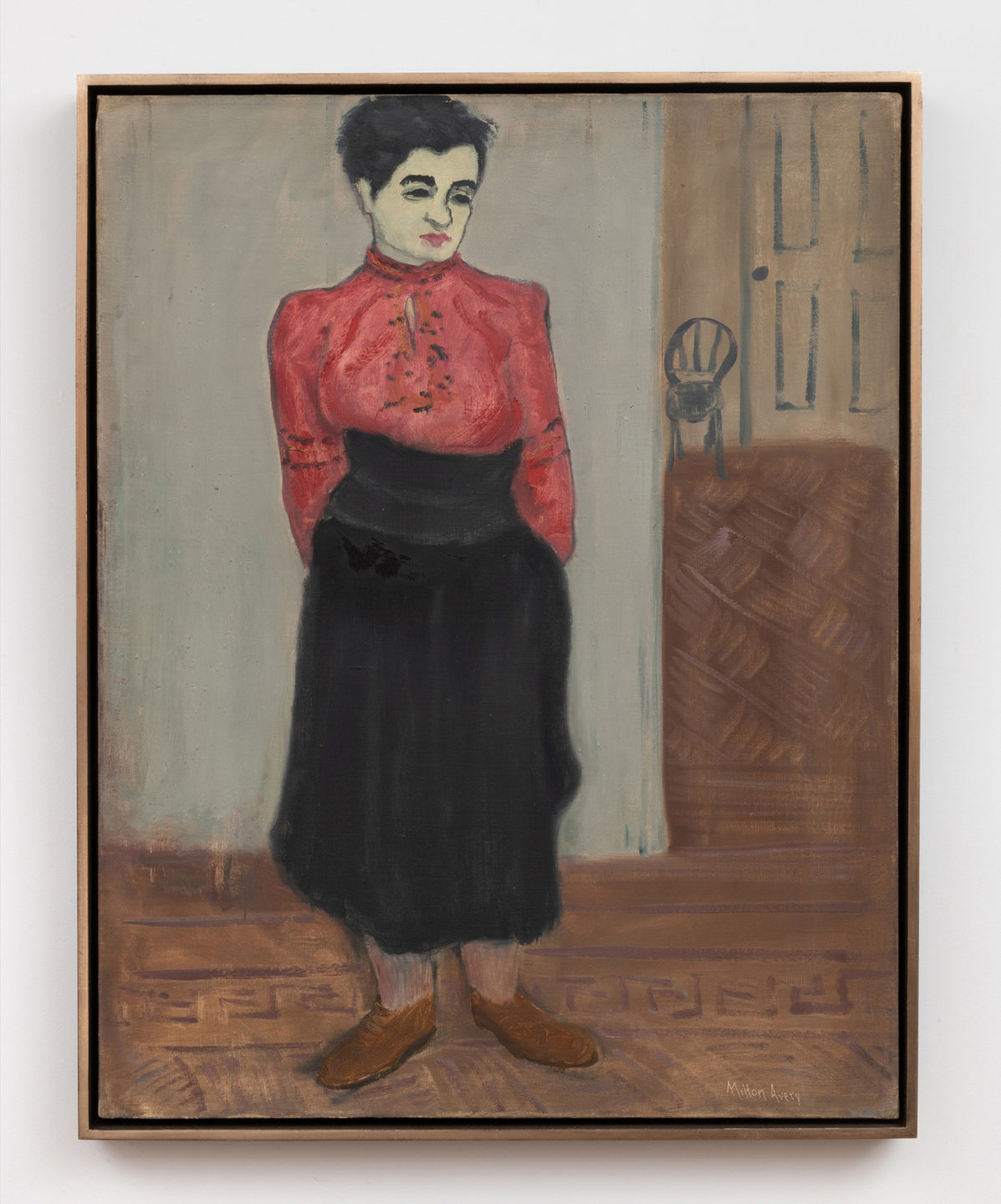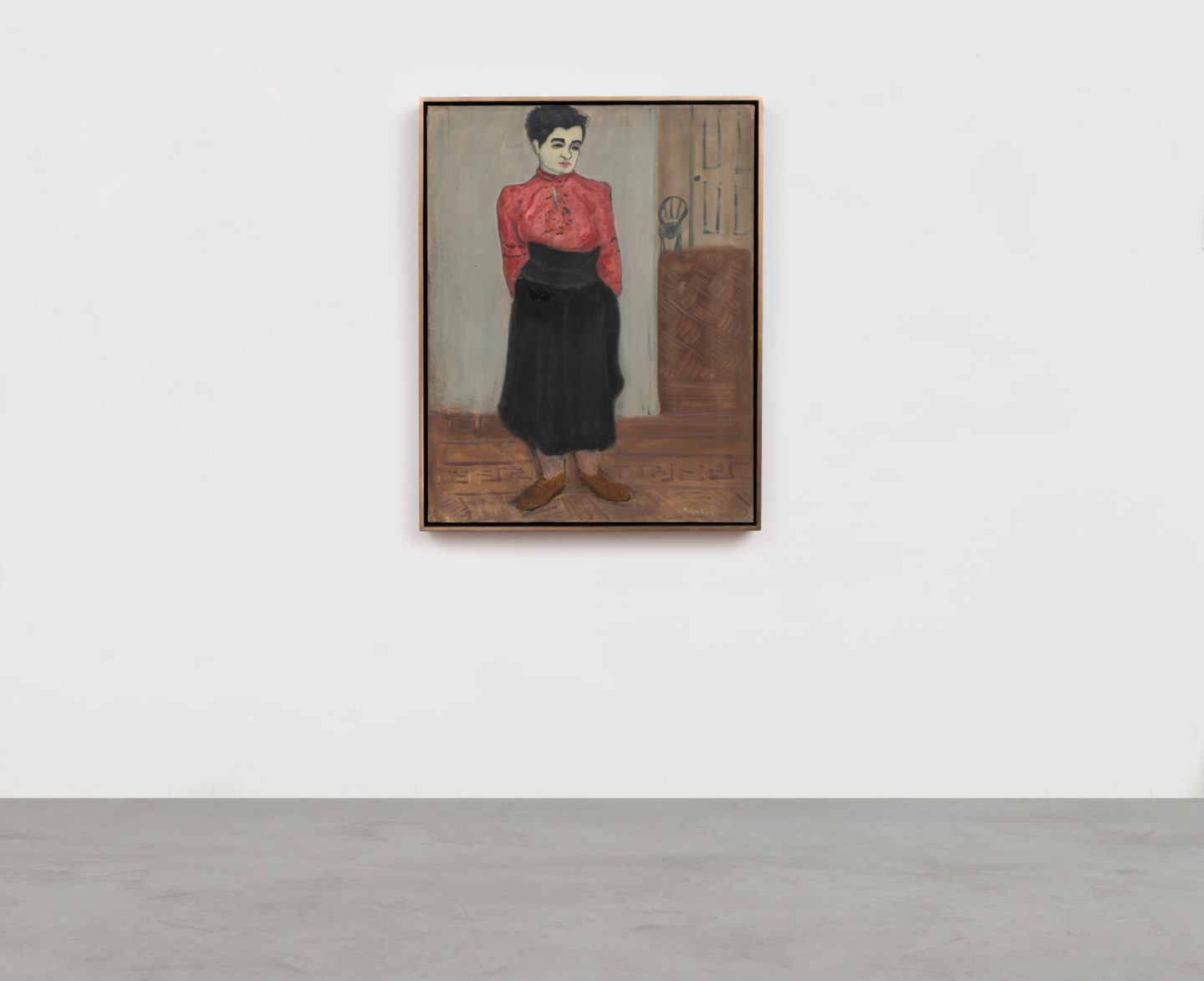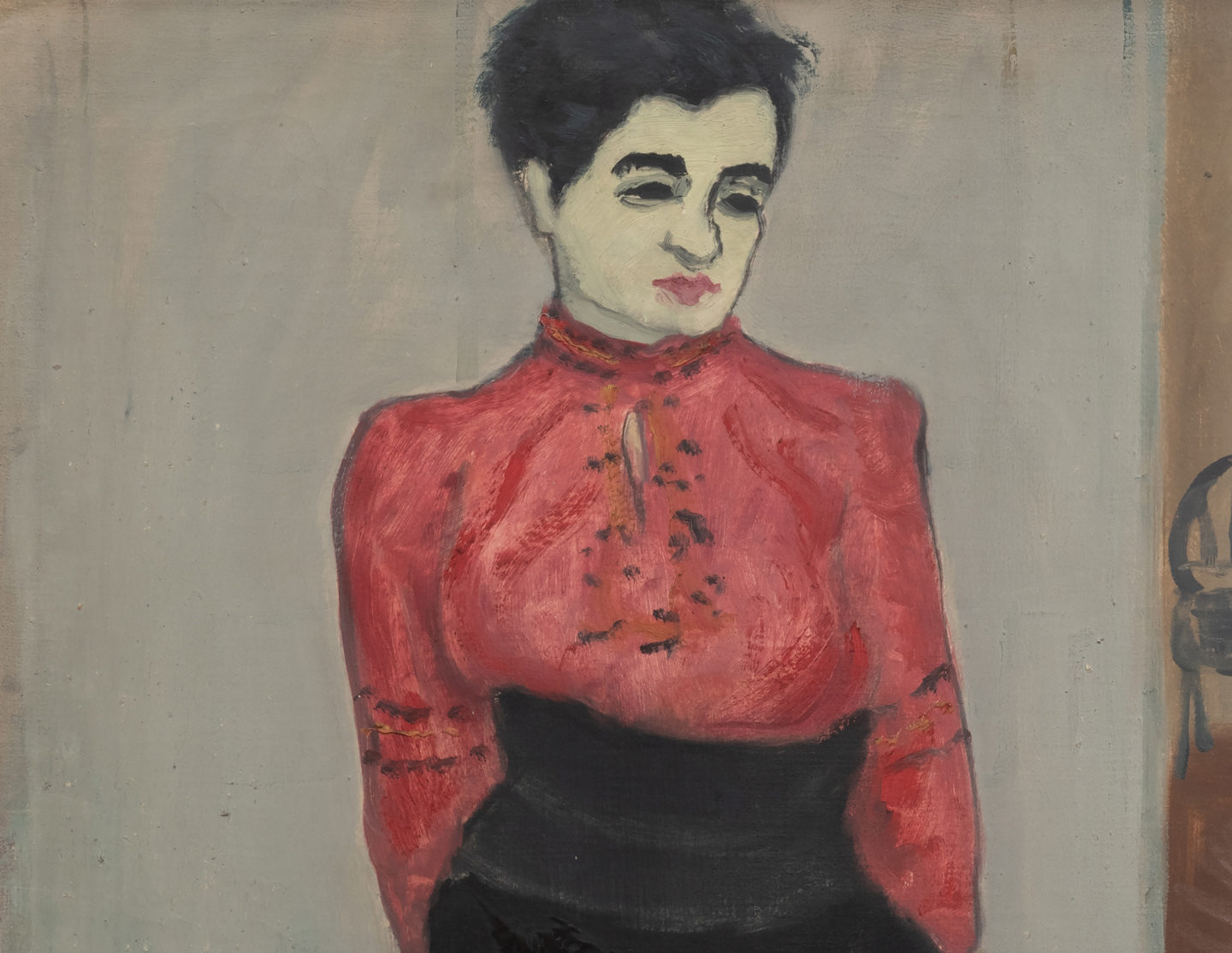Milton Avery Peasant Blouse c.1936
Oil on canvas
83.8 x 66 cm
33 x 26 in
Peasant Blouse, c.1936, depicts Tirca Karlis, later the owner of an eponymous gallery in Provincetown. The subject of a number of Avery paintings, she was a huge advocate of his work and from 1958 to 1974 Avery participated in more than twenty exhibitions at her gallery.
Avery arrived in New York in 1925, and paintings from the mid-1930s onwards can be seen as a culmination of his first decade in the city, during which he developed his own signature language while absorbing the influence of the American academic tradition and European modernists such as Picasso and, in particular, Matisse.
Writing about that first decade in the city, Edith Devaney comments, ‘Arriving in New York in 1925, Avery encountered an art scene which mirrored the dismal cultural and political times, with little opportunity either to see or exhibit art. However, his arrival coincided with the beginning of what was to be one of the most creative periods of regeneration in America’s cultural history, starting in 1929 with the opening of MoMA under the direction of the visionary Alfred Barr, and the Whitney Museum of American Art opening three years later. By the 1930s many influential artists and intellectuals, fleeing the rise of Nazism in Europe, had settled in New York. Josef Albers and, later, Hans Hofmann resumed their teaching practice in America, exporting many European practices to the US…’
With its simplified forms, Peasant Blouse attests to the influence of European modernism while inhabiting a world that is very much Avery’s own. Avery was, by this point, beginning to enjoy increasing success. In 1935 he joined the Valentine Gallery, one of the major galleries on 57th Street, known for showing works by Matisse, Picasso, Derain and Braque among the Europeans, as well as Stuart Davis and other prominent Americans. Avery’s first one-man show was held there in March 1935.
About the artist
One of the most influential artists of the twentieth century, Milton Avery (1885–1965) is celebrated for his luminous paintings of landscapes, figures and still lifes, which balance distillation of form with free, vigorous brushwork and lyrical colour.
Avery’s work is represented in major museums and private collections worldwide including the Art Institute of Chicago; Hirshhorn Museum and Sculpture Garden; LACMA; Metropolitan Museum of Art; Museum of Fine Arts Boston; MoMA; National Gallery of Art; Philadelphia Museum of Art; The Phillips Collection; SFMOMA; Smithsonian American Art Museum; Tate; Thyssen-Bornemisza Museum of Art and the Whitney Museum of American Art.
Organised by the Royal Academy of Arts, London, in collaboration with the Modern Art Museum of Fort Worth, Texas, and Wadsworth Atheneum Museum of Art, Hartford, Connecticut, a major retrospective of Avery’s work commences at The Modern, Fort Worth this autumn (7 November 2021–30 January 2022), travelling to the Wadsworth Atheneum (24 February–5 June 2022) and the Royal Academy of Arts (15 July–16 October 2022). Currently on view at the Wadsworth Atheneum (until 17 October 2021), Milton Avery: The Connecticut Years presents an intimate look at the formative years of the modernist master.


